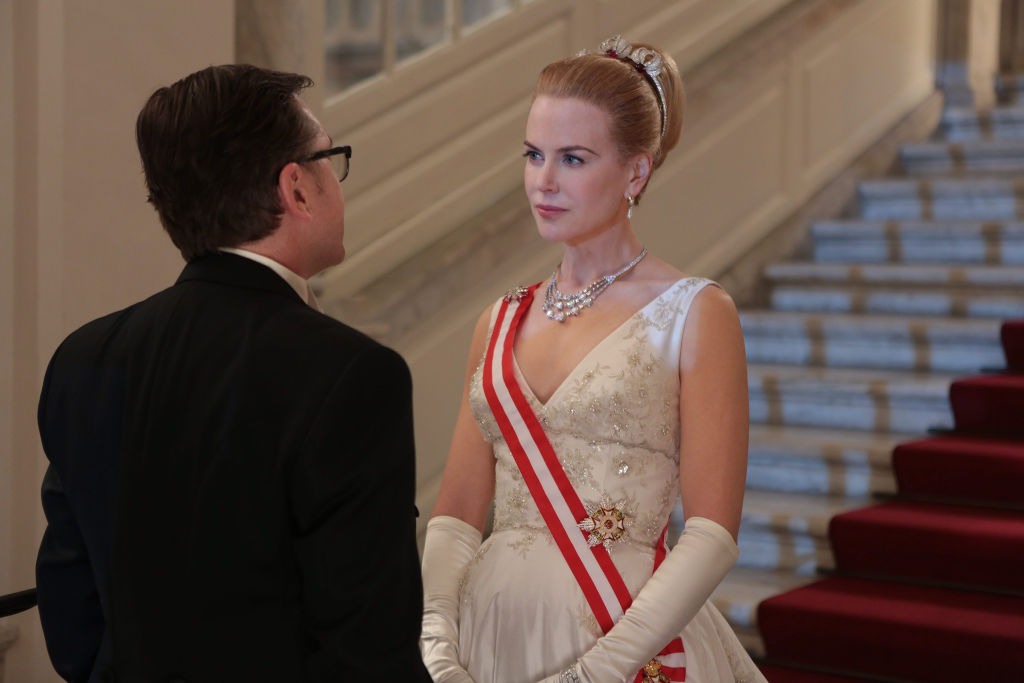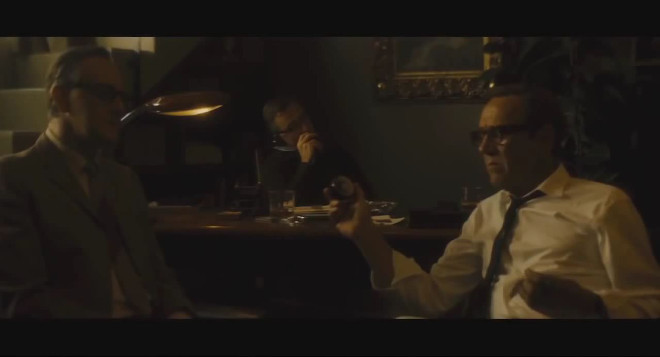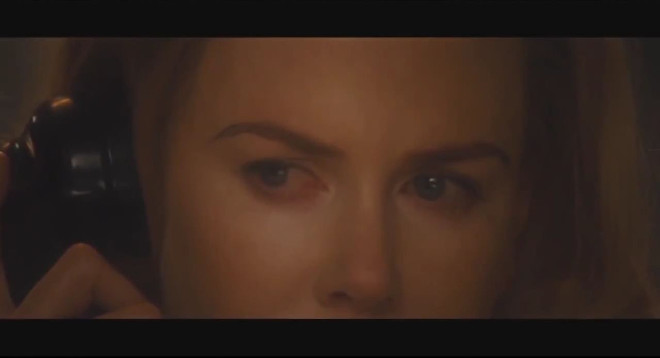The Team Behind Grace of Monaco Have Made The Worst Possible Film, So You Don’t Have To
This is the only explanation for the overarching suckiness.

Much like Joaquin Phoenix in the lead up to 2010’s I’m Still Here, Grace of Monaco has been executing a clever and groundbreaking con on all of us. Purporting to be a serious portrait of a year in the life of actress-turned-princess Grace Kelly, director Olivier Dahan and writer Arash Amel have instead served up a clever, tongue-in-cheek documentary on how not to make a film about this screen legend.
What makes this a truly unique documentary is that there are no interviews or glimpses behind the scenes. Instead, it truly commits to its task, unflinchingly delivering the worst possible Grace Kelly movie you could imagine.
Grace Kelly’s name has become legendary, and a film about her life has been a long time coming. It is fortunate then that Dahan and Amel have recognised this, and have thoughtfully put in place measures to prevent future filmmakers fucking up this important story.
Without the usual documentary framework, at times it can be hard to discern what specific methods have been employed to make this film so unbelievably awful. Sure, we could point to things like the unnecessary extreme close ups that pepper the film like measles ravaging the body of an innocent, or even to the fact that the script is for a half-hour film that’s been stretched over 103 minutes. But it’s so much more nuanced and intricate than that. Contrary to what the bumper stickers will have you believe, shit doesn’t just happen. Here’s how Dahan and Amel pulled it off:
Forget The Wealth Of Interesting Subject Matter You Have To Work With And Just Make Some Stuff Up
Grace Kelly came from a family of performers, Olympic athletes and award-winning writers. She herself won an Academy Award at the age of 26, and had a complex personal life. Naturally, you should ignore all that — and everything that happened before 1962, for that matter — and limit your overall timeframe to a single year.
Kelly’s courtship with Prince Rainier was shadowed with speculation, and the film is largely composed of the stuff. Grace Of Monaco was purportedly based on interviews with biographers and information from palace insiders, who described Grace’s unhappy life in Monaco. In the lead-up to the filming, the family expressed unhappiness about the film’s portrayal of both Kelly and her husband, and distanced themselves from the project. However, the filmmakers bravely stuck to their guns, undercutting the validity of anything they put in the film by prefacing it thus: “The following is a fictitious account inspired by true events.”
Maybe Make Tax A Key Plot Point
Grace of Monaco sits halfway between The Princess Diaries and a really bad, airport-grade political thriller. The latter half of the film is taken up by Grace (Nicole Kidman) attending lessons in movement, language, history, and etiquette at the home of Count Fernando D’Aillieres (Derek Jacobi). It’s an extended power montage that wouldn’t seem out of place in a One Direction-soundtracked teen movie, and it’s inexplicable. Who is D’Aillieres, and why is he helping? Who cares, when you can watch shot after shot of Nicole Kidman throwing temper tantrums and speaking French with a spoon in her mouth? Interspersed are sporadic shots of Prince Rainier III (Tim Roth) in a room full of men who all look identical (+/- glasses), and who all seem to be playing the same character. Rainier bickers on the phone with French President Charles de Gaulle about whether or not he should tax the citizens of Monaco, a disagreement that slowly escalates into a threat of invasion.
As the two conflicting plot points battle with each other over which is more pointless, they eventually unite for one, brief moment. Just as all seems lost, Grace tenderly recites a fun historical fact to Rainier. It has zero impact on story progression, but phew. I guess that validates all those months she spent reading and walking about with a figurative book on her head. Oh, and she also takes some bread to some soldiers.
Make The Plot So Thin That There Is No Room For Characterisation
This prevents audiences from fully immersing themselves in the experience, and allows them to view the actors not as the characters they are playing, but as the characters they’ve played in the past. Instead of considering the different taxation options Rainier might consider to best stave off invasion, a viewer is more likely to be thinking, “Look, there’s Rory’s boyfriend from Gilmore Girls!”, “Hey, isn’t that the guy from Reservoir Dogs and Lie to Me?”, and “how did Dracula become a priest?”
Shatter The Fourth Wall And Home In On Your Lead Actress’ Greatest Weakness
You’ve already failed to suspend viewer disbelief, so why not throw in a film device which will aggressively force audiences so far back into their own reality that they come out the other side looking like a Looney Toon, shouting “IS THIS REAL LIFE” into the Matrix void? That’s right, mock Nicole Kidman by including a sequence where she tries to mimic the emotions that are written on a series of flash cards.
Finish up this scene, move past the endless exposition and the most nonsensical monologue since Winnie the Pooh, then return back to the flash cards. It bonds the audience like only a shared nightmare can.
At Highly Emotional Moments, Go For Extreme Close-Ups
Cinema audiences are famous for not wanting to interact with people that they didn’t specifically come to the film with. They sit at least a seat apart from strangers whenever possible, and snarky comments about mobile phones or loud rustling food packets is about as close to interaction as you generally get. So then, what better way is there alienate an entire room than including repeated, uncomfortable close ups of Nicole Kidman’s face?
This begins about a third of the way in, during a conversation between Kelly and her priest bestie (Frank Langella) over a glass of whisky. For whatever reason — maybe it’s because the dialogue is poor, maybe it’s because they weren’t happy with the facial expressions — we suddenly find ourselves smooshed against her nose. We are then dragged so close to her eyes that we feel that maybe it’s our fault that they are watering. We are regularly subjected to this for the rest of the film.
Grace Kelly Was A Style Icon, So Give The Costume Department A Budget Of $3 And A Glue Gun
There are books made up purely of pictures of Kelly in different outfits, and there are exhibitions of her clothing that have travelled the world. The powers-that-be behind Grace of Monaco have tackled this legacy by ensuring that all of the costumes look dull and conventional. In the pivotal scene where Nicole Kidman is hayfevering her way through an uncomfortably long speech, audiences are treated to the distraction of an outfit borrowed from a five year-old who dressed as a fairy princess on Halloween, complete with stuck-on jewels.
Make The Film Look Simultaneously Expensive And Lazy
Grace Of Monaco has some pretty amazing sets and period cars. Rather than let these features cloud the audience’s impression of how truly bad the film is, Dahan threw in plenty of weird edits, and made sure to spell out plot points painstakingly through dialogue — rather than through imagery, suggestion or any of the myriad film techniques available.
Basically, talented actors are squandered, back-story is not offered, interesting true facts are not utilised, and the various plot threads completely fail to cohere. Dahan and Amel are to be commended on their thorough commitment to ensuring that there will never be a worse film made about Grace Kelly’s life. Or at least Grace Kelly’s life in 1962.
Seriously though, half a star. For the set.
–

